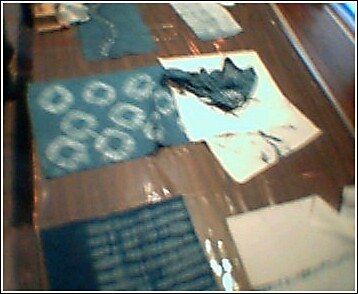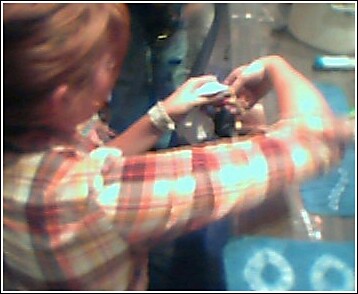



Okay, I finally made it to the Textile Museum! Fantastic place! I had a lovely time there!
I was there for a presentation called "True Blue," which discussed the use of indigo dye in cultures worldwide. It was very interesting. Trade routes sprang up along centers of its production or natural plant growth. "Crocking"--when it rubs off on the skin is considered great in some parts of the world as it imparts status. However, in India, the color blue was once associated with lower castes, and the printing and dye processes were passed down patriarchially. In Japan, it was considered a protection from snake and insect bites--which could've been due to the nautral ammonia in the indigo. Celts used a form of indigo (woad) for their blue skin coloring. In Nigeria, a pit method's used where the dyestuff lasts for a year and they add more plants in to maintain the color. There, the dyeing's done by women in the South, and men in the North. Sadly, the younger generation is becoming disinterested in the process, and these dyeing methods could eventually be lost. The only place indigo wasn't native to was the Americas--where logwood was used for a rich deep blue instead. Man, I hope I got all of this right, lol...I really did learn a lot, lol!
After the main presentation, textile student Johanna Buschmann, from the Univ. of Kansas, gave us all an indigo dyeing demonstration. She specializes in shibori and in the pics above you can see her examples, demo'ing a shibori technique using a little stand with a hook, and an indigo resist piece from Cameroon. It was pretty cool. For all you dyers, she was using synthetic indigo...





3 comments:
Thanks for this info. I've seen the stand design in books...what keeps it from tipping over? I'm visualizing the use of a tight tension while the tying or stiching is going on.
I can see you hade a wonderful time and learned a lot
It sounds like a great time. I love doing natural dying.I think everything sounds right except I wonder if you meant Logwood? It makes a sort of purpled blue color. I don't know if I've ever heard of longwood. Maybe it comes from taller trees? ;-)
Post a Comment